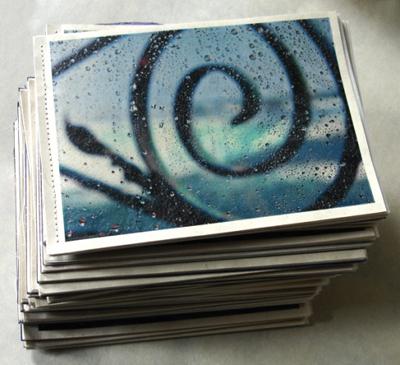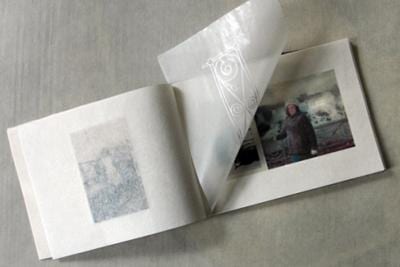
Credit: Thomas Blanchard photo
If Ian Phillips weren’t so well organized, he could probably be considered as a subject for Hoarders. While the well-known Toronto artist and illustrator maintains numerous collections of everything from old photographs and hand-written letters to bowling trophies and nurse-centred romance novels, what keeps him from falling into the realm of A&E reality show contestant are both his fastidious organizational skills and his reasons for collecting the objects.
“I’m attracted to all the little leftover scraps from people’s lives,” he says. “I find things in flea markets and antique shops and I’ve also rescued a lot from people’s trash. I see things and know I’ll want to use them in my art practice some day, so I tuck them away until I figure out what to do with them.”
Originally hailing from Thunder Bay, Phillips came to Toronto 25 years ago to study commercial art at George Brown. Since then, he’s created graphics for big-name clients like The New York Times and Target, and designed books for locals like Derek McCormack and Maurice Vellekoop. But some of his most interesting output comes from his work as a publisher of his Pas de Chance micropress.
His latest work Niagara File is a hand-printed and bound book featuring a story by American writer and long-time friend Elissa Joy. The volume has a visual flair thanks to photos of the falls Phillips has collected over the last decade with his ex-partner, artist Grant Heaps. Spanning the 1920s though the mid-1970s, the shots of the famous wonder were captured by various tourists who passed through.
What’s most interesting about the images is that the falls themselves are actually obscured in each one, either by the subjects’ bodies or the famous mist. But the distinctive fence appearing in each picture — erected in the early 20th century to prevent awestruck onlookers from tumbling to a watery death — makes the location clear.
“I became obsessed with the fence and started making drawings of it,” Phillips says. “Historically people most often went to Niagara Falls to get married or as daredevils, either braving the falls in a barrel or walking over them on a tightrope. I started to think of the fence as a metaphor for the barriers people cross over as they go through different phases in their lives.”
To complement the book launch is a window installation at Type Books on Queen St West in which the falls are reimagined as a quilt created by Heaps, ceramic barrels crafted by Alexx Boisjoli, and daredevil bunnies courtesy of textile artist Sonja Ahlers. Photographer Thomas Blanchard has created a second installation in the basement of the gallery, which references one the site’s most popular activities that allows visitors to take an elevator 150 feet underground to view the backside of the falls from a cave.
Given his long-time interest in the attraction and obsessive collecting of images depicting it, it’s a bit surprising to learn Phillips only made his first visit there two years ago.
“To be honest, I’d never really been interested in going until I started researching the book,” he says. “I was actually surprised and how impressed I was. I’ve been back about five times since then.”
While much of Phillips’ work is tied up in objects and images of the past, he seems surprisingly unsentimental for days gone by.
“I always try to live in the present,” he says. “I’m not a nostalgic person and I don’t like getting wrapped up in thinking the past is better than what we have now. We actually live in a really good time in history.”


 Why you can trust Xtra
Why you can trust Xtra


